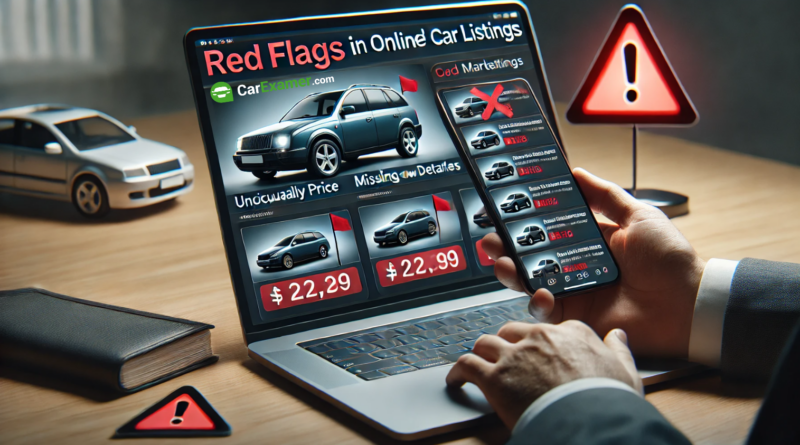Red Flags to Watch for in Online Used Car Listings
Here’s a straightforward guide to help you spot the red flags to watch for in online used car listings. Shopping for a used car online is super convenient, but it comes with its own set of challenges. While there are plenty of honest sellers out there, scams and misleading ads are unfortunately common.
1. The Price Seems Too Good to Be True
If a car is priced way lower than similar models, you should be skeptical. Scammers often post dirt-cheap listings to grab your attention, but there’s usually a catch—like a stolen car or hidden damage. Use pricing tools like Kelley Blue Book to check if the price makes sense.
2. The Ad Lacks Key Details
A solid car ad should include the make, model, year, mileage, and condition. If the description is vague or missing things like the VIN (Vehicle Identification Number), it might be a sign that the seller isn’t being transparent. Don’t hesitate to ask for more info if something feels off.
3. Photos Look Fake or Low-Quality
Blurry photos, or worse, stock images that clearly aren’t the actual car, should raise a red flag. A serious seller will upload clear pictures showing the car from all angles—inside and out. If they don’t, ask for better photos or move on.
4. No Mention of a Vehicle History Report
A history report (like from Carfax or AutoCheck) is a must-have when buying used. If the seller doesn’t provide one—or avoids the topic—it could mean the car has been in a bad accident, has a salvage title, or has other major issues. Always ask for this upfront.
5. The Seller Pushes You to Decide Quickly
Beware of sellers pressuring you to “act fast” or claiming they need to sell immediately because of some urgent situation. This is often a tactic to rush you into making a bad decision. Take your time to do your research.
6. Sketchy Payment Requests
Legit sellers won’t ask for payment through wire transfers, gift cards, or cryptocurrency. These are untraceable, making it impossible to recover your money if you’re scammed. Pay only through secure methods and never hand over money before seeing the car.
7. You Can’t Verify the Seller’s Info
Always make sure the seller provides a valid phone number, address, and proof of ownership. If they refuse or give you the runaround, it’s better to walk away. Scammers thrive on anonymity.
8. Details Don’t Add Up
Read the description carefully and compare it to the photos. If the ad mentions leather seats and the pictures show cloth, or the mileage looks suspiciously low, it’s a sign the listing might not be trustworthy.
9. Extra Fees or Out-of-State Listings
Be cautious if the seller says the car is out of state and asks you to cover “shipping fees.” Scammers use this trick to take your money without delivering anything. Stick to local listings when possible.
10. No Test Drive or Inspection Allowed
If the seller won’t let you inspect the car or take it for a spin, it’s time to move on. A reputable seller will be open to you checking the car or even bringing in a mechanic to look it over.
How to Stay Safe When Buying Online
- Stick to Trusted Websites: Use platforms like Autotrader or Cars.com, which have safeguards against scams.
- Do Your Homework: Research the car, the seller, and the VIN across different platforms to make sure everything matches.
- Keep Conversations Secure: Don’t share personal details or move the conversation off the platform—it’s a common scam tactic.
- Meet in a Public Place: Always meet the seller in a well-lit, public area. Bring someone with you for extra security.
Bottom Line
Buying a used car online doesn’t have to be stressful. If something feels off, trust your gut and move on to the next listing. By staying alert and following these tips, you can avoid scams and find the right car for your needs without any headaches.
Buying a used VW. Buying used vauxhall, BMW, Jaguar, Ford, Volvo, Range rover, Bentley, Aston Martin, Porsche, Ferrari, Lamborghini, Maserati, Hyundai, Tesla, Honda, Pagani

